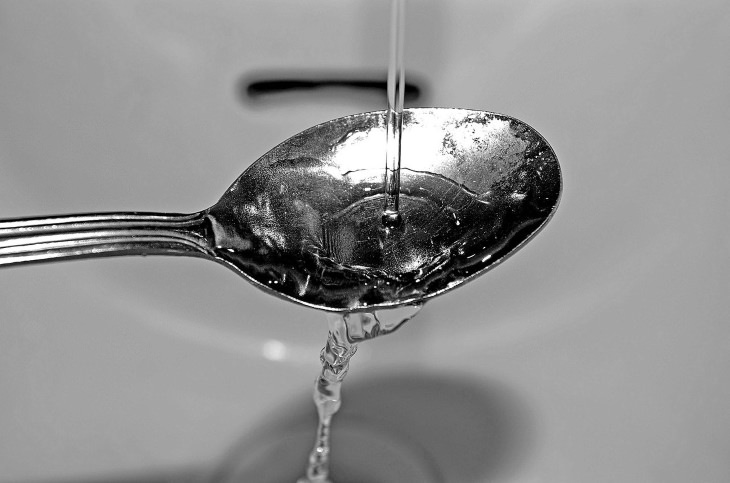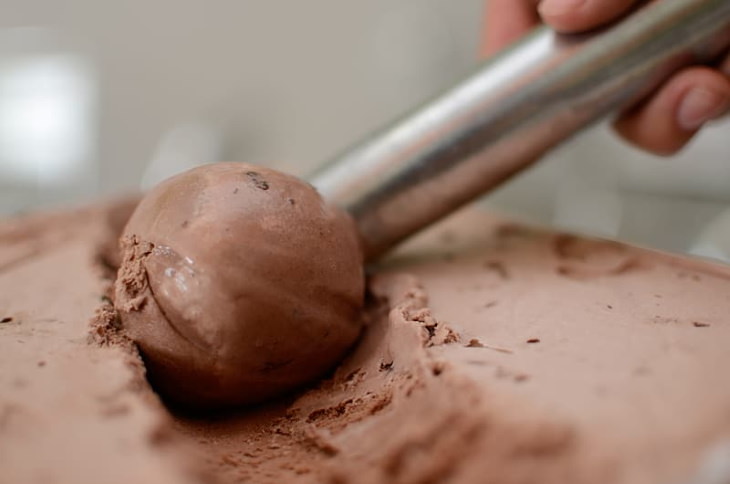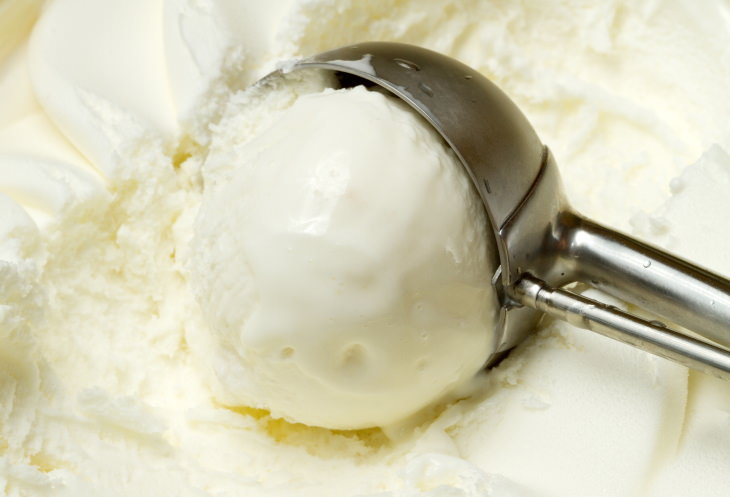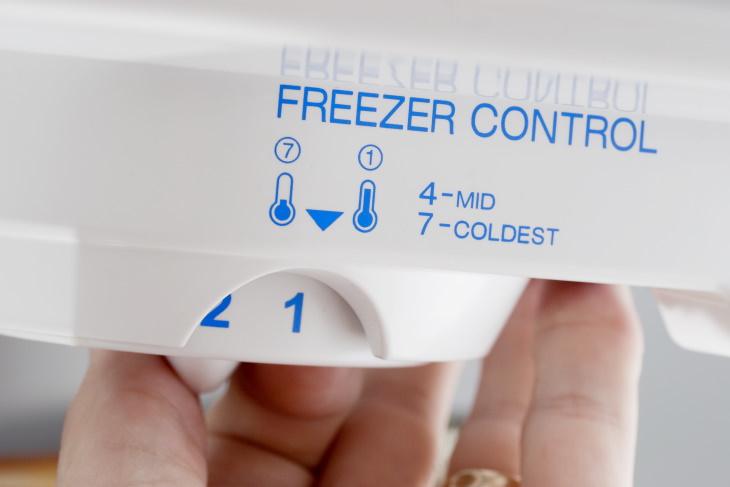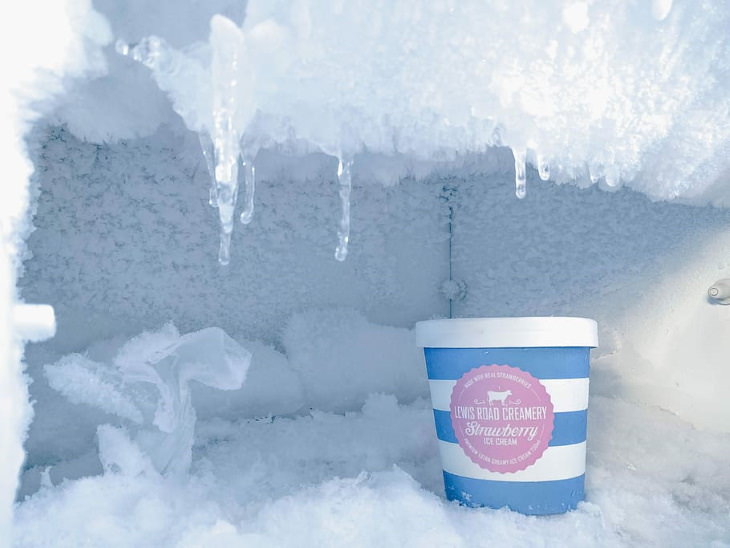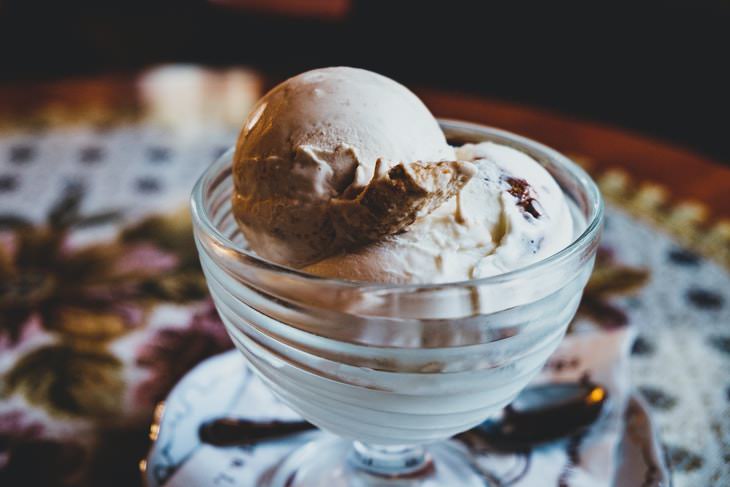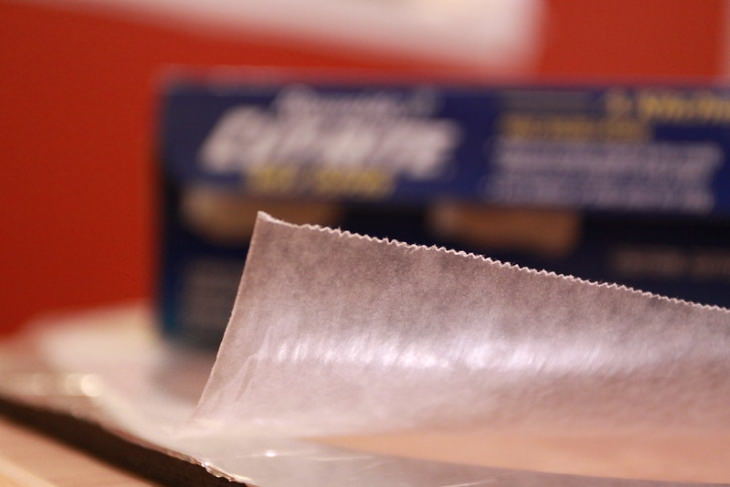1. Rinsing a spoon or ice cream scoop with water before use
Some people habitually rinse the spoon or ice cream scoop in cold or hot water to make serving the ice cream easier, which works pretty well, but it ruins the texture of the ice cream in the long run. This is because the water on the spoon actually forms a thin layer of ice on the remaining ice cream in the tub where you were scooping, so the next portions you'll scoop out won't be as good as the previous ones.
If you're using a hot scoop or spoon, it can also melt the ice cream too much. Instead, ice cream experts recommend using a room temperature scoop, which will soften the ice cream just enough without melting it.
2. You're using the microwave to soften the ice cream
Confectioners say that this is one of the worst things you could possibly do with ice cream, as microwaving will typically let the ice cream melt too much and ruin the entire texture of the dessert once and for all. Avoid microwaving the ice cream, and simply let it soften at room temperature for 10-15 minutes instead. Sure, this may take a bit longer, but the results will be much better, too! For an even better result and virtually no risk of melting, confectioners recommend transferring the ice cream into the fridge for about 20-30 minutes before serving it up.
3. You're letting the ice cream melt before it even makes it into your freezer
If ice cream is the first thing you pick up while grocery shopping and as a result, the moment you get home it's all melted, you'll need to change that habit and make sure to buy ice cream last to so that it stays frozen for as long as possible. When buying ice cream, always pay attention to the box it comes in. Is it covered in ice?
If so, it's likely that the ice cream has melted before because someone left the grocery store freezer door open for too long, or it isn't sealed properly. In cases like these, take a look if there are any ice-free fresher cartons at the back of the freezer at the store.
4. You think ice cream lasts forever
We really wish ice cream was on the list nonperishable goods, too, but the truth is that ice cream is one of the most delicate foods, and every time you scoop out a serving from the container, the remaining ice cream's quality will deteriorate. Although most store-bought ice creams can be stored for 1-2 months after opening according to Eatbydate, more often than not your ice cream will taste significantly worse by then.
The ice cream you buy will retain all of its qualities for about a week or a little more. After that, ice crystals will inevitably start forming on the surface of the ice cream, which will affect its taste and texture. So, instead of buying a huge tub of ice cream that'll last you months, we recommend buying smaller portions.
5. The temperature in your freezer isn't cold enough
If the temperature in your freezer isn't cold enough, the ice cream you buy will spoil much faster and gain a flatter texture. The International Dairy Foods Association recommends storing ice cream at the temperature between -5 and 0°F( -20 to -17°C) for optimal results. This means cranking down the freezer temperature to the coldest setting for most non-commercial freezers. Signs that your ice cream is spoiled are crystals on its surface, a dried-up crust on the ice cream aka freezer burn, or any alterations in taste or smell.
6. Never store ice cream on the freezer door
As we've mentioned previously, temperature fluctuations like opening a freezer too often as it usually happens in grocery stores or keeping the freezer open for a bit too long like it often happens in households can both promote freezer burn and melt the ice cream. Thus, it makes perfect sense that the freezer door - the warmest place in your freezer - is not a good place for ice cream storage. Instead, put the ice cream in the back of the freezer, so that it remains at a steady low temperature as long as possible.
7. You store ice cream next to strong-smelling foods
When you don't seal the ice cream carton well enough, smells from the freezer can be imparted into your dessert. This also tends to happen when you store ice cream for too long near other strong-smelling foods, such as fish, meat, garlic, or herbs. So, if you don't wish to experience the funky taste of meaty or garlicky ice cream, it's best to keep the dessert away from foods with strong smells.
You can also wrap the ice cream in a plastic bag before putting it into the freezer if you're planning on keeping it in the freezer for more than a week or two.
8. Extra tip to extend the shelf life of ice cream
To prevent a frozen layer of ice from forming on the surface of your ice cream when storing it in the fridge, you can use parchment paper, cheese paper, or wax paper to cover the surface of the ice cream before replacing the lid. Ice cream parlors use this clever tip all the time to preserve ice cream, but make sure not to use metal or plastic foil, as these can stick to the ice cream and can actually be quite difficult to take off when you're ready to dig into the ice cream the next time.

